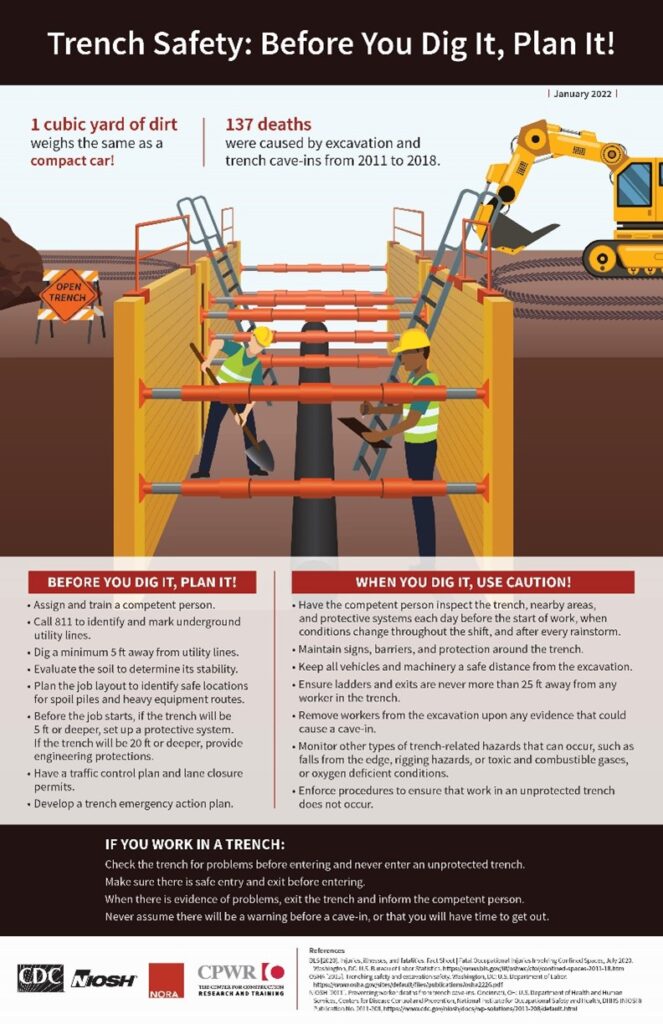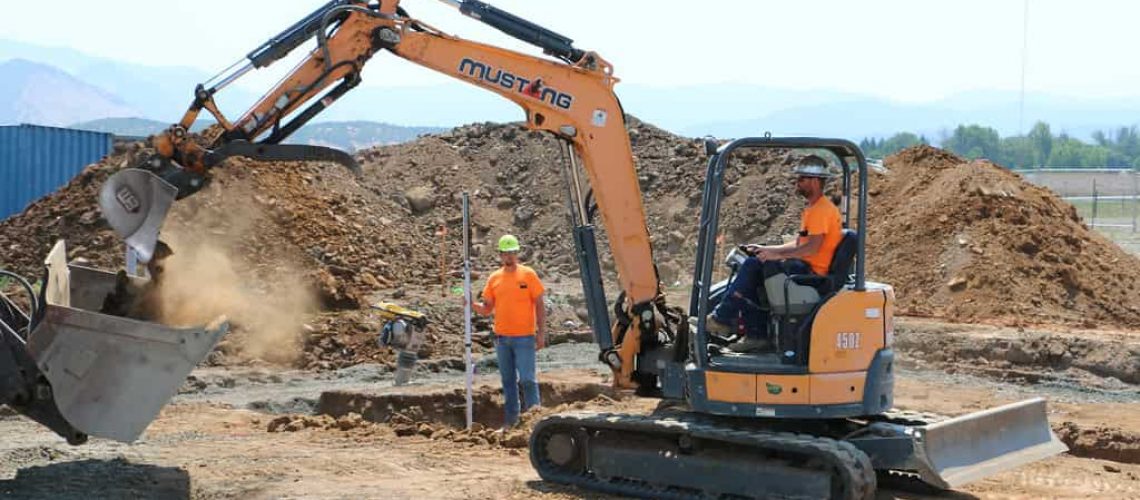Safety should always come first on the construction site. There are many excavation hazards that you must consider. Excavation is defined as creating any type of hole in the ground and can be perilous. Proper safety precautions and adherence to federal and local regulations for excavator operation and excavation, can prevent many of these hazards.
Oversights can be devastating in trenching and excavation operations. When excavating for trenching, there are specific safety measures that must be followed. There are an average of 40 construction worker deaths every year in the US. In fact, from 2003-2017 there were a total of 373 fatalities involved specifically with trenching. As you can see, it is a very serious concern.
Going underground is extremely dangerous. New trenches can collapse or cave in and if you think you can handle it you could be dead wrong. A cubic yard of dirt can weigh as much as a car. Also, conditions can change at any moment resulting from weather and/or vibrations from surrounding traffic.

Specific Excavation Hazards
When it comes to running an excavator, knowing the surrounding related hazards is extremely important. Some hazards to be aware of are: trench collapses, cave-ins, falls, falling loads, hazardous atmospheres, and contact of overhead power lines. You should clearly mark underground utility lines before every single digging operation.
There are multiple issues with trenching and it is best to follow the guideline requirements from the Occupational Safety and Health Administration, (OSHA). It is extremely important to complete excavation safety training before operating an excavator.
Excavation Safety
When making trenches for protection from cave-ins, you must follow OSHA rules. You must comply with this requirement for any trench more than five feet deep. Every job site must have a competent person, as described by OSHA, to ensure the OSHA requirements are being followed and there is a safe, easy way in or out of the trench. These are appropriate safety precautions for trenches.
- Sloping
- Shoring
- Benching
- Shielding
Use Sloping in trenches under 20 feet and directed by the competent person on the jobsite. For more than 20 feet, the other OSHA excavation standards must be used for occupational safety. Also you will want to ensure the spoils pile and other objects are a safe distance away from the edges of the trench. Workers should never enter a trench that does not have a protective system in place. Workers should also listen to the safety precautions and orders from the competent person for that job site.
Other Tips
There are many other resources available online for safety concerns. Always work out a plan before digging and communicate directly with the competent person on the jobsite. When excavation safety is a priority, the job can be done without injuries or worse.When searching for an excavator for purchase, or rental, it is crucial to know the safety regulations required for any construction site for that piece of equipment. At Mountain West Rentals and Sales, we value your precautions and placing safety first.



